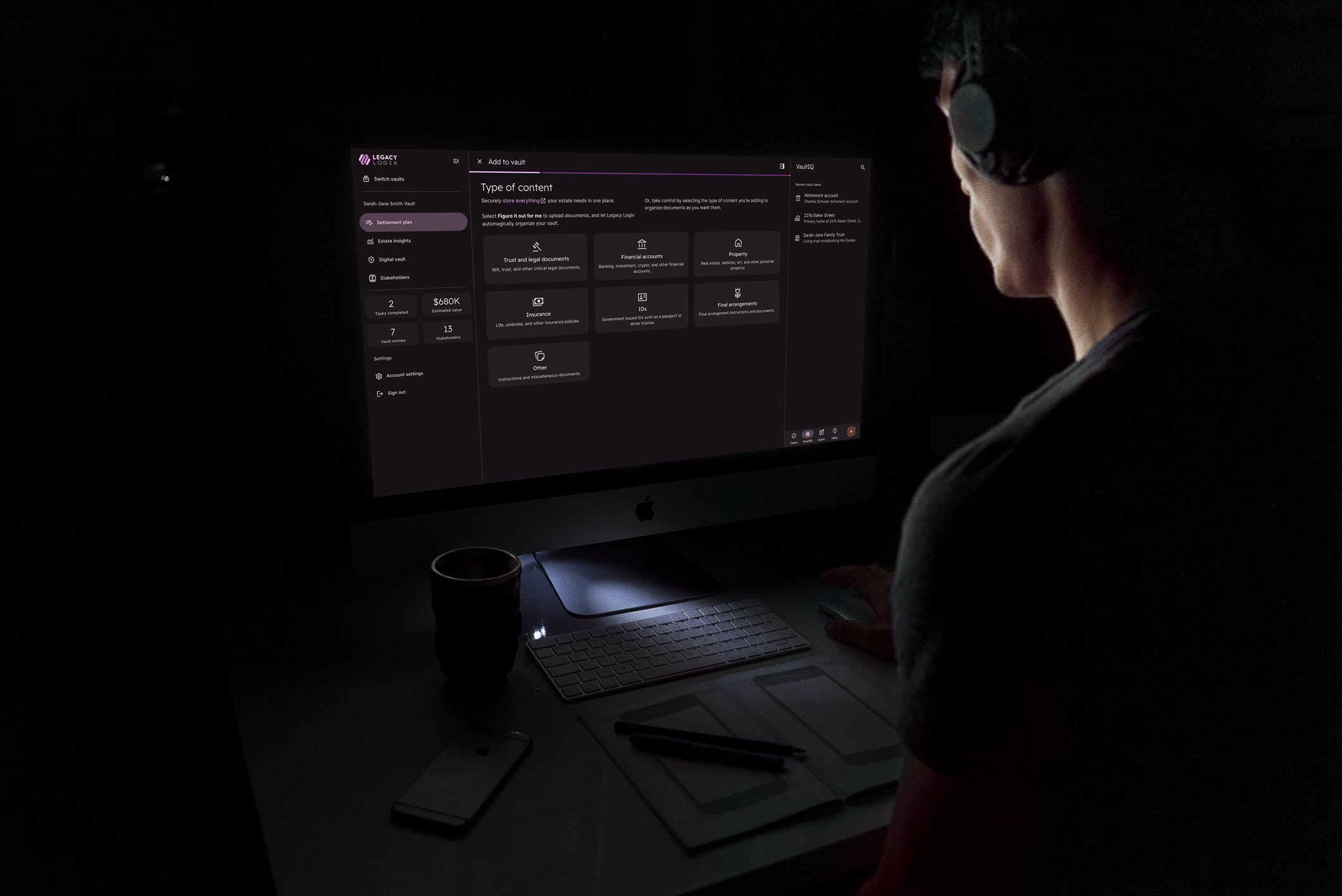
Legacy Logix supports people settling and managing Estates.
May 2023 - Current
As a co-founder, I’ve been with Legacy Logix since the beginning. I’m primarily responsible for the product and design team. However, this is a startup, so I’ve worn about every hat there is… and may have invented a few new hats along the way.
Legacy Logix Design System: Creating an Accessible Estate Management and Settlement Experience
Situation
Legacy Logix is a SaaS product designed to help individuals manage their personal estate information during their lifetime and provide executors with essential tools such as probate analysis and detailed task management after a death. The product needed a cohesive design system that would serve a primarily older user base with varying levels of technical proficiency and potential accessibility needs.
Task
The primary challenge was to develop a comprehensive design system that would:
Support multiple devices (mobile, tablet, desktop)
Prioritize accessibility for an older user demographic
Allow for internationalization/localization
Ensure consistency and ease of use across the platform contexts
Minimize development costs and time-to-market
Create an intuitive information architecture that separated distinct user activities
Action
I developed a strategic approach that leveraged existing design frameworks while customizing them to meet Legacy Logix's specific requirements:
Foundation & Component Development:
Built upon Google's Material v3 design language as a foundation
Implemented MUI components but modified critical elements to better leverage Material v3 advantages, particularly around color management
Established design tokens using Style Dictionary to ensure consistency across platforms
Integrated MJML for responsive email design
Created an image pipeline management system that used design tokens in SVG before exporting to multiple formats (SVG, JPG, PNG, WEBP)
Enhanced Accessibility Features:
Rebuilt core design components in Figma with accessibility-first modifications that are substantially more efficient in the Figma environment
Improved visual focus states beyond Material v3 standards by implementing a more prominent 3px outline (offset by 1px) with reduced corner radii, creating a total 4px highlight that adheres to the 8px grid system
Standardized target zones for mouse and touch interactions based on Fitts' Law principles, addressing common dexterity challenges faced by older users
Created custom components for elements typically overlooked in Material design, such as accessible tables and split-buttons
Information Architecture Refinement:
Developed a thoughtful separation of user activities based on distinct workflows:
Task management and work execution in one dedicated area
Document management (legal, financial, and important records) in another
Estate analytics (balance sheets, statistics, pro forma) in a management dashboard
Stakeholder information (attorneys, accountants, beneficiaries) in a comprehensive directory
Established clear pathways between these areas while maintaining separation between management functions and execution tasks
Results
The comprehensive design system for Legacy Logix delivered:
A highly accessible interface that specifically addresses the needs of older users through enhanced visual focus states and optimized interaction targets
A flexible, device-agnostic experience that maintains consistency across mobile, tablet, and desktop
A foundation ready for future internationalization without requiring significant redesign
Reduced development time through strategic use of existing frameworks (Material v3, MUI) combined with custom modifications
An intuitive information architecture that separates distinct user activities while maintaining clear relationships between them
A scalable design token system that ensures visual and functional consistency throughout the product
Dynamic theming that supports dark/light mode and highly effective co-branding with partners
This design system not only met the immediate needs of Legacy Logix but established a foundation that can evolve with the product while maintaining its core principles of accessibility, consistency, and intuitive user experience.













